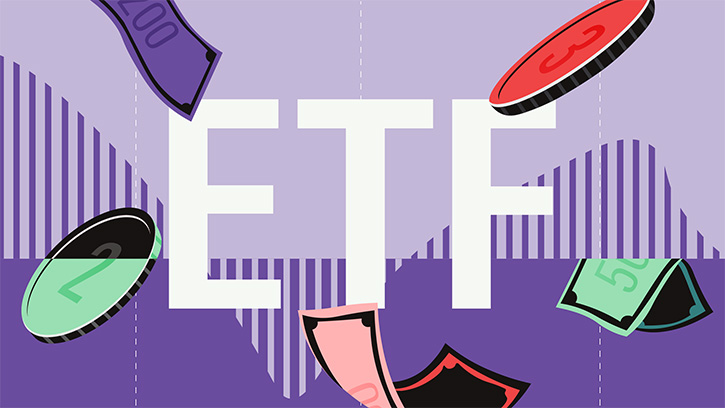.jpg)
The European exchange-traded fund (ETF) market has closed the second quarter of the year with flows of €53 billion (£44.5 billion), the highest on record. In the first half of the year, investors poured €98 billion into ETFs, paving the way for a record-breaking year for the investment vehicle.
I purposely say investment vehicle rather than passive strategy. This is because ETFs can no longer be identified solely as index-tracking strategies. Indeed, active ETFs have been making plenty of headlines lately, and in the first half of the year over €6.1 billion of flows (6.3% of total flows into ETFs) were invested in them. Yes, they represent a tiny minority, but it is a growing area of the market. So, if you still equate ETF with passives, it's time for a rethink.
What Are ETF Buyers Investing in?
In terms of broad asset classes, the bulk of money – €40.5 billion – in the second quarter went into equity, mainly to funds with a heavy US large-cap market bias. The US equity market experienced a poor start to the second quarter because of a higher-than-expected inflation reading in April. But it then bounced on ongoing enthusiasm for technology stocks to close the quarter in positive terrain.
Investors have ridden the positive momentum of the US equity market both via global large-cap equity ETFs, where the US is by far the largest geographical exposure, accounting for 65%-70% of a typical portfolio, as well as single US equity ETFs that track well-known indices such as the S&P 500.
In the case of single US equity market exposure in particular, the dominance of passively-managed money is entrenched by now. Despite an element of foreign exchange risk, US equity exposure is a core long-term holding for European investors. But this is a market where the long-term rate of success of active managers (that is, their ability to generate returns above a standard benchmark) is very poor. Investors have long woken up to this reality and have made low-cost passive funds the go-to option to allocate money for this market exposure. So, it's unsurprising to see such solid flows almost every quarter into these – yes, in this case, standard passive – ETFs.
In fact, three S&P 500 ETFs from iShares, SPDR and Invesco are amongst the top five money-gathering ETFs in the second quarter, and two of them, the iShares Core S&P 500 ETF and the SPDR S&P 500 ETF, both with a Medalist Rating of Gold, top the flows league in the first half of the year.
Can You Invest in Bond ETFs?
Yes. Bond ETFs gathered €11.7 billion of flows in the second quarter, up from €9.2 billion in the first quarter. Central banks sent messages to tone down expectations for a speedy delivery of multiple rate cuts. This favoured ongoing flows into short and ultrashort-dated bond ETFs, which are typically used as liquidity management tools.
Commodity products recorded outflows of €2.1 billion. This was the fifth consecutive quarter of disinvestment, so it's difficult not to establish a direct relationship between these outflows and inflation trends. This is a segment of the ETF market that is overwhelmingly dominated by products that provide exposure to gold. And yet, despite the ongoing upside to gold prices, investors have been mostly selling out. This seems to indicate that exposure to gold has been primarily used as an inflation hedge. As inflation pressures have waned, so has the interest to remain invested in the yellow metal.
The ETF flows story showed ongoing declining interest in ESG. Flows into ESG ETFs totalled €4.7 billion in the second quarter, down from €7.6 billion in the first quarter and represented just 9% of total flows into ETFs, down from 17% in the first quarter. The decline in interest for ESG investments from the highs of 2020-22 has been particularly steep in the equity space where the bulk of assets and product offerings resides.
Jose Garcia Zarate is associate director of passive strategies in the Morningstar manager research team



























